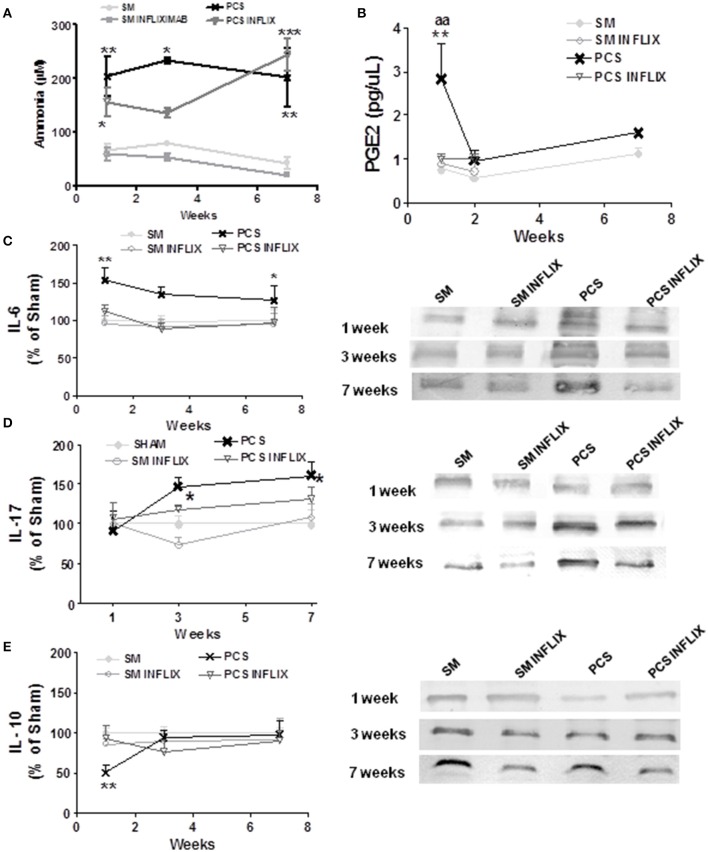Figure 2.
Infliximab reduces peripheral inflammation but not hyperammonemia in PCS rats. Blood samples were taken at the indicated times after surgery from control (sham, SM) or PCS rats treated with vehicle or infliximab (INFLIX). (A) Ammonia levels were measured in blood. Plasma was isolated from blood samples and PGE2 levels (B), IL-6 (C), IL-17 (D), and IL-10 (E) were analyzed. Representative images of western blots are shown. Values are mean ± SEM of 5 rats per group for PGE2 and 8–14 rats per group for IL-6 and IL-10. Two-way ANOVA with repeated measures and Bonferroni post-test were performed. Statistic values for ammonia (A) were: F = 23.3, Df = 3, P < 0.0001. For PGE2 (B) the effects of PCS and Infliximab treatment were statistically different with p < 0.05, F = 7.3 and Df = 3 and there is also a significant effect of time (p < 0.05, F = 5.8, Df = 1). For IL-6 (C) PCS rats were statistically different from controls with p < 0.01, F = 13 and Df = 1 and the effect of Infliximab treatment in PCS rats was also statistically significant (p < 0.01, F = 9.4, Df = 1). For IL-17 (D) PCS rats were statistically different from controls with p < 0.05, F = 3.8 and Df = 3 whereas the effect of Infliximab treatment in PCS rats was not statistically significant. No time effect was found in this case. For IL-10 (E) values for PCS rats were statistically different from controls with p < 0.05, F = 6.4 and Df = 1 and there is also a significant effect of time (p < 0.05, F = 4.0, Df = 2). Interaction was significantly different (p < 0.05, F = 4.0, f = 2). Values significantly different from controls are indicated by asterisks and from PCS rats by aa. *p ≤ 0.05; **p < 0.01; ***p < 0.001; aap < 0.01.

